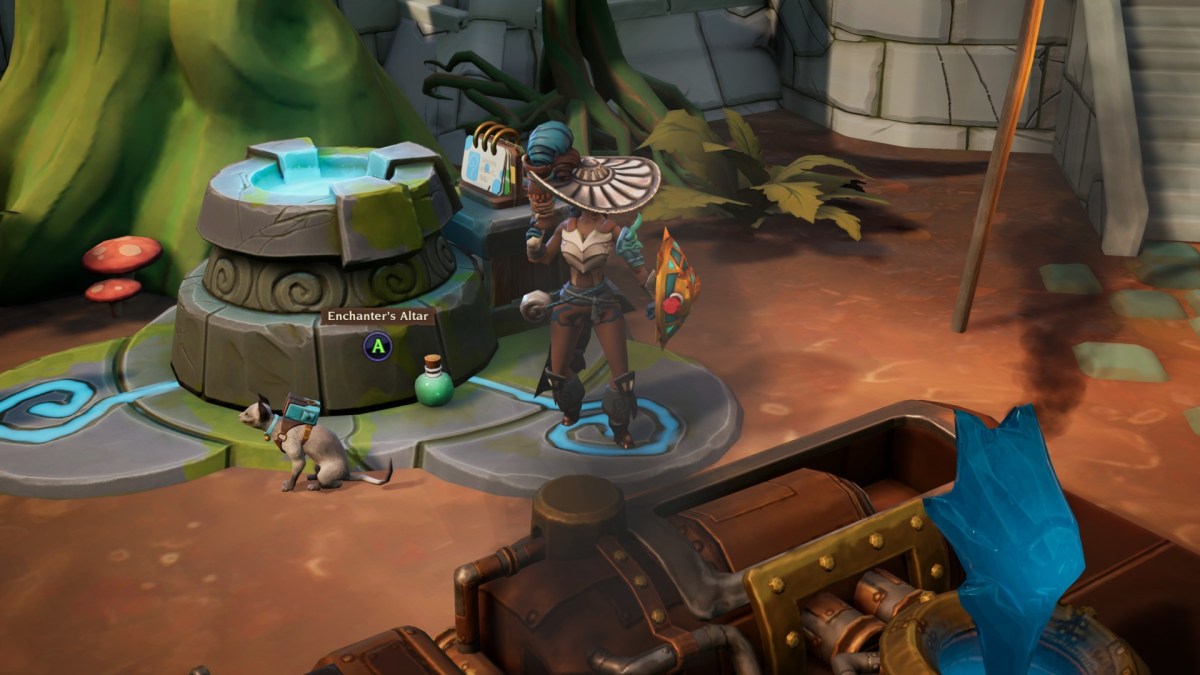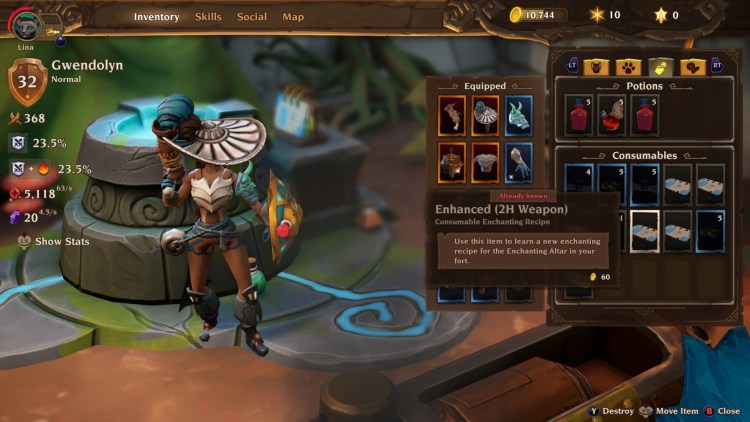Throughout your travels in Torchlight III, you’ll find some consumables that can be used to enchant your items. Of course, these would require those items to have enchantment slots available in the first place. Here’s our mini-guide to help you out.
Note: This guide is intended for Torchlight III‘s early access stage and certain mechanics may change in due course. For more information, check out our guides and features hub.
Torchlight III: All about enchanting
In order to enchant items in Torchlight III, you’ll need to build an Enchanter’s Altar in your personal fort. Don’t worry because this is part of a tutorial sidequest as you progress through the game’s first act.
Once you’re done, you should take a look at the consumables tab of your inventory. It’s likely that you’ve picked up a few enchanting recipes that drop randomly from mobs. These recipes have their own rarities as well and are further subdivided based on the item type (ie. 1H melee weapon, 1H ranged weapon, 2H melee weapon, 2H ranged weapon, gloves armor, helmet, and so on).
Note: Click on these recipes to learn them and they’ll be unlocked in your Enchanter’s Altar. The recipes are unlocked account-wide, so your alts will still have access to them. You could destroy/discard recipes that you’ve already learned.
Next, take a look at your resources tab in your inventory. You’ll notice various materials here that are also shared by all characters in your account.
What you’ll need are essences that are obtained whenever you break down an item using the Enchanter’s Altar. By default, you’ll just need to mouse over an item and hold right-click (or the Y button if you’re using an Xbox gamepad).
Essences are, likewise, subdivided based on rarity, and you can only disenchant magic/green, rare/blue, and legendary/orange items. You can’t do this for uncommon/grey items so you might as well destroy them normally.
Note: Legendary items that are broken down using the Enchanter’s Altar will provide you with the legendary passives for your Legendarium. Check out our Legendarium guide if you need more tips regarding this feature.
Anyway, let’s say you’ve got a decent item that you want to enchant. Make sure that it’s got an enchantment slot available.
Note: Try to avoid enchanting lifebound items (like the one in the example below). Even though lifebound items might have better stats, they will disappear on death. You’d waste your materials in the process unless you used an extremely rare Scroll of Unbinding.
Then, select a corresponding enchantment that you’ve already unlocked. If you have the requisite materials, the affix will be placed on the item. Here are a few examples:
- Blunt Force (1H and 2H melee/ranged weapons) – Bonuses for bleed and critical strike stats.
- Enhanced (1H and 2H melee/ranged weapons) – Bonuses for relic and on-hit effects.
- Defender Bonus (offhand items like shields or focusing crystals) – Defensive bonuses for offhand equipment.
- Elemental Bonuses (offhand items like shields or focusing crystals) – Adds elemental status effect bonuses for offhand equipment.
Armor enchantments are also dependent on certain categories:
- “Large armor” refers to chest, leg, and locomotion gear pieces.
- “Medium armor” refers to shoulder, boots, or hatch armor pieces.
- “Small armor” refers to helmets or gloves.
- “Echonok,” “Goblin,” and “Hyvid” perks provide bonuses when fighting voltura, goblin, and hyvid/insect mobs respectively.
Torchlight III is available as part of Steam’s early access program. For more information, check out our guides and features hub.











Published: Jun 27, 2020 08:20 am